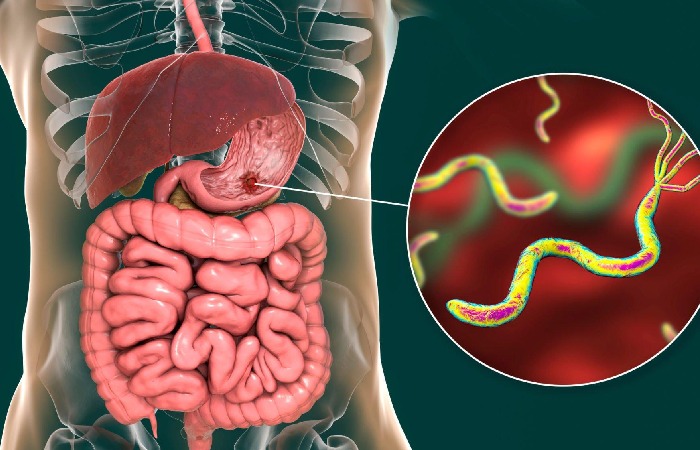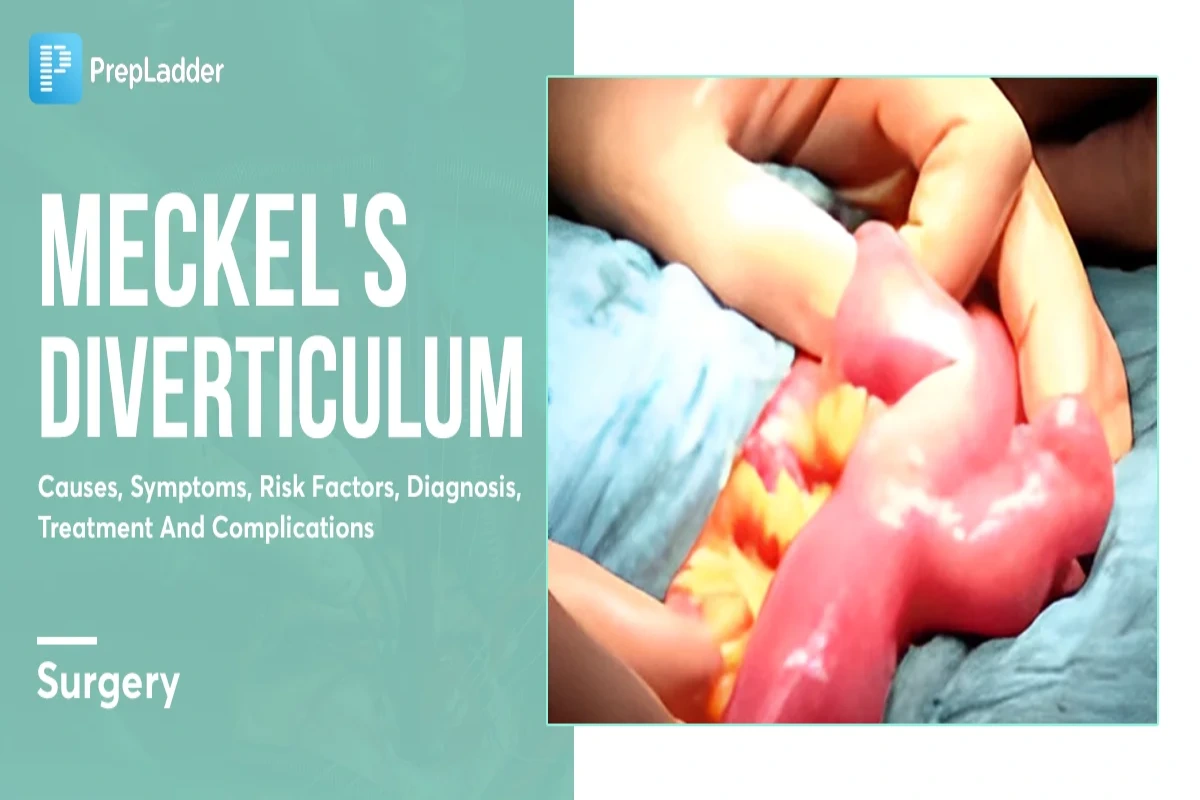Meckel’s diverticulum – During the early embryonic period, the embryo consists of 3 layers – mesoblast, endoblast, and ectoblast. All these sheets converge anteriorly towards the umbilicus in a simultaneous manner. The midgut communicates with the umbilicus via the vitelline canal (omphalomesenteric canal), which disappears at the 10th week of embryonic life when the loops reintegrate into the abdomen. The partial persistence of this channel is [Meckel’s diverticulum]. It is rare and found in less than 4% of the population. It most often remains asymptomatic and is only diagnosed incidentally even when complications occur such as – gastrointestinal bleeding, intestinal obstruction, and intestinal intussusception. In addition to Meckel’s diverticulitis, perforation, umbilical fistula, and tumor degeneration.
Table of Contents
Introduction To The Disease

Meckel’s diverticulum is the partial persistence of the omphalomesenteric canal. Common congenital disability of the gastrointestinal tract with a slight male predominance. It is rare and encountered by 2–4% of the population. Meckel’s diverticulum is usually asymptomatic and only diagnosed incidentally or when complications arise. However, they are not common in adults. The diagnosis of bowel obstruction due to Meckel’s diverticulum can be suggested preoperatively. It is on abdominal ultrasound, technetium-99m scintigraphy, abdominal computed tomography, or magnetic resonance imaging (MRI).
Mechanical occlusion is the most common complication in adults; it represents 24 to 53%. It is often an occlusion with a variable mechanism – volvulus, intussusception, fixation of the diverticulum at the umbilicus, or any other point of the abdomen. The frequency of complications is slightly higher in men. In the case presented, a man offered a hail volvulus. The location of Meckel’s diverticulum varies between 10 and 100 cm about the valve of Bauhin in 50% of cases, and its dimensions are on average 2cm in diameter and 5cm in length. The diverticula consist of a mucous heterotopia, gastric type in 23-60% of cases; it may be pancreatic-type mucosa.
Various Observations On Meckel’s Diverticulum Crohns
In this study, Meckel’s diverticulum was located 60cm from Bauhin’s valve 5cm in diameter and 8cm in length with gastric-like mucosa. During this study, the mean age was 29.8 years; there were 8 cases of intestinal obstruction with ileal segmental resection carrying [Meckel’s diverticulum] with the restoration of digestive continuity. In the case presented, bowel resection was moving [Meckel’s diverticulum] with the restoration of continuity. Therefore, knowing how to evoke the diagnosis of it within the vast group of acute or subacute intestinal occlusions. Especially in young subjects with no surgical history because it is challenging to identify despite progress in cross-sectional imaging. Furthermore, knowing how to recognize it in diagnosing acute abdominal pain is essential to guide surgical management best.
Meckel’s diverticulum can mimic Crohn’s disease as both can present with recurrent cramping abdominal pain, bright red blood per rectum, and diarrhea.That’s correct. Meckel’s diverticulum and Crohn’s disease are two situations that can reason similar symptoms, making it difficult to diagnose them correctly. Both conditions can cause recurrent cramping abdominal pain, bright red blood per rectum, and diarrhea. However, some critical differences between the two states can help doctors make a diagnosis.
Meckel’s Diverticulum Can Cause Symptoms
Meckel’s diverticulum is a small pouch that forms on the small intestine. It is usually found in the lower part of the abdomen, near the appendix. [Meckel’s diverticulum] can cause symptoms when it becomes inflamed or infected. Crohn’s disease is a chronic inspiring bowel disease affecting any part of the digestive tract. It is characterized by inflammation and ulcers in the lining of the digestive tract.
In addition to the symptoms mentioned above, [Meckel’s diverticulum] can cause nausea, vomiting, and fever. Crohn’s disease can cause weight loss, fatigue, and joint pain.
Conclusion
Meckel’s diverticulum is the partial persistence of the omphalomesenteric canal. It is rare and occurs between 2 to 4% of the population. It usually remains asymptomatic and is only diagnosed incidentally or when complications arise. However, they are not common in adults. Therefore, knowing how to recognize it in diagnosing acute abdominal pain is necessary to best guide surgical management. The evolution depends on the precocity of the diagnosis.

